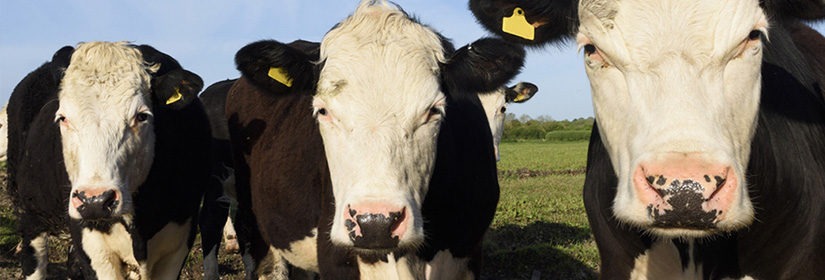No products in the basket.

Testing for Infectious Bovine Rhinotracheitis (IBR)
Infectious Bovine Rhinotracheitis (IBR) is caused by bovine herpesvirus 1 (BoHV-1). This virus causes an acute upper respiratory tract disease which can lead to fatal pneumonia. Infection can also cause a severe and prolonged drop in milk yield, reduced fertility and abortion.
However, on occasion, the disease can be so mild that newly infected animals are not seen to be affected. The virus is mainly shed in secretions from the nose but can also be spread in the semen of infected bulls. An important characteristic of the disease is that once an animal has become infected, it remains infected for life. This is termed ‘latent infection’ with the virus surviving in neural tissue. Reactivation and shedding of the virus can occur at periods of stress.
The experience of transport and introduction to a new herd is a common trigger for reactivation of the virus, leading to new infections in the herd. Vaccination is an effective means of preventing the disease but does not stop infection nor does it stop infected animals from shedding the virus at a later date.
Infected animals can be detected by testing either milk or blood for antibody to BoHV1. The type of test used for this is an Elisa test. The available tests cannot differentiate between antibodies stimulated by the naturally occurring virus and those stimulated by conventional BoHV-1 vaccines.
However, in 2001, BoHV-1 marker vaccines were introduced into this country. Central to the marker vaccine system is an antibody test that can distinguish marker vaccinated animals that have not been infected from marker vaccinated animals that have been infected. Marker vaccines can now be used in an infected herd where the long-term objective is to achieve freedom from infection with minimum culling.
However, it must be recognised that the marker vaccine test is less able to detect infection than the standard test plus a small number of animals may have latently infected semen, despite testing negative on the IBRgE Elisa test. The consequence of this limitation is that marker vaccinated bulls are not accepted onto AI studs and may not be accepted for import to some countries.
IBR is endemic in Ireland and in many parts of the world, but some countries are free of infection and there are moves in other EU countries to eradicate the disease. Despite the effect this disease has on animal health and productivity, its main significance is as a barrier to the export of live cattle to other regions or countries within Europe where the disease has already been eradicated. In future, in order to gain access to these markets, herds will have to be able to prove freedom from BoHV-1 infection.
Testing for Infectious Bovine Rhinotracheitis (IBR)
Infectious Bovine Rhinotracheitis is diagnosed usually by showing the presence of IBR antibodies in blood using Elisa tests. Once infected animal produce antibodies following a period of seroconversion lasting approximately 3- 6 weeks. Circulating antibodies usually remain detectable in blood for the remainder of the life of the animal, therefore this is a useful means of identifying animals which have been infected in the past and maybe latently infected, or act as a source of infection to other cattle.
In unvaccinated herds, testing is usually carried out using the IBRgB Elisa test, whereas the IBRgE Elisa test is used in vaccinated herds. Animals which have been vaccinated with marker vaccine will be positive on the IBRgB test, but should be negative on the IBRgE test if they have never been naturally infected.
Animals which are recently infected with Infectious Bovine Rhinotracheitismay be tested by taking a nasal swab from the nose of the animal using a plain cotton swab. This will then be tested using a PCR test for respiratory diseases. Usually, this will be done as part of a multiplex PCR test, where we also look for other diseases such as
- Bovine Respiratory Syncytial Virus (BRSV),
- Bovine Coronavirus,
- Parainfluenza Virus 3,
- Mannheimia haemolytica,
- Haemophilus sommni.
Swab tests to detect the presence of respiratory disease are best taken from animals, early in the course of the disease. Animals which are in the early stages of IBR infection shed the virus for 3-4 days after infection, viral shedding reduces as the disease progresses, and it becomes more difficult to detect the virus in the sample. Swabs should be taken and sent to the lab on the same day, as the quality of viral material deteriorates if the sample is left hanging around. If samples are taken at the weekend, they should be stored in the fridge until dispatch
